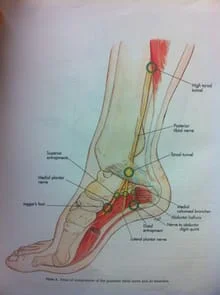- Posterior Tarsal Tunnel Syndrome (Most Common)
- Anterior Tarsal Tunnel Syndrome
1. TARSAL TUNNEL SYNDROME (Posterior)
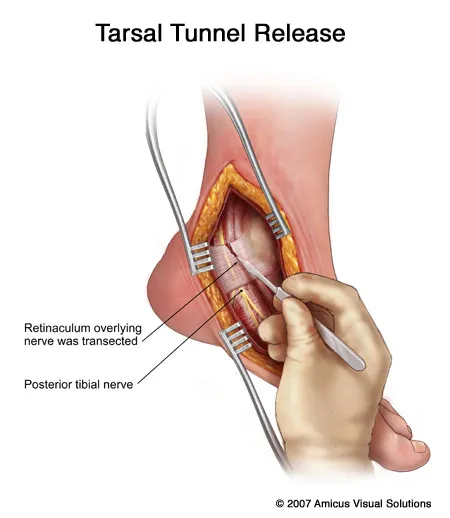
CAUSE:
- Tight ligaments in the foot and ankle.
- Cysts, tumors and varicose veins on the inner ankle.
- Tendon inflammation in the ankle or trauma to the ankle.
- Flat feet.
- May be associated with diabetes, back pain, alcoholism and thyroid disorders.
SIGNS AND SYMPTOMS:
- Shock sensation or shooting pain, numbness and tingling in the ankle, heel, and arch.
- Burning in the heel and arch.
- May be seen with inner ankle swelling.
- Night pain common.
- Tapping the nerve at the area of compression reproduces shooting pain.
- May be associated with plantar fasciitis.
TREATMENT:
- Anti-inflammatories to reduce swelling and inflammation.
- Orthotics or braces to support a flatfoot if present.
- Treat underlying metabolic disorder if present.
- Immobilization (cast or brace) to rest the foot and ankle.
- Physical therapy to restore muscle strength in the ankle and to help reduce inflammation in the area.
- Nerve conduction and EMG studies to further assess the injury.
- MRIs may be needed to evaluate space-occupying problems (i.e. tumors).
- Surgery to decompress the nerve and remove any space occupying lesion or varicosity that may be causing the problem.
Intraop Pics of Tarsal Tunnel Release (Below)

Incision Placement is Key to the Perfect Tarsal Tunnel Release
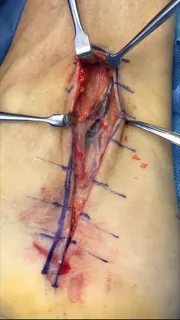
Above, Release of the retinaculum and small varicose veins can be seen.

Above, the Abductor Hallucis Muscle, and its deep fascia are seen near the bottom of the incision.
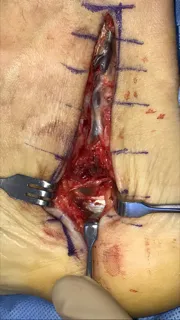
Above, the Muscle has been dissected out and the Deep Fascia identified prior to release. The fascia compresses the nerve as it goes into the foot.
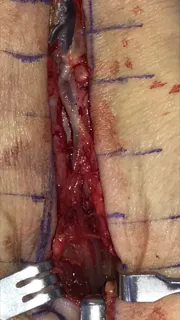
Above, the Complete release of the fascia to relieve any compression on the nerve as it goes into the foot.
